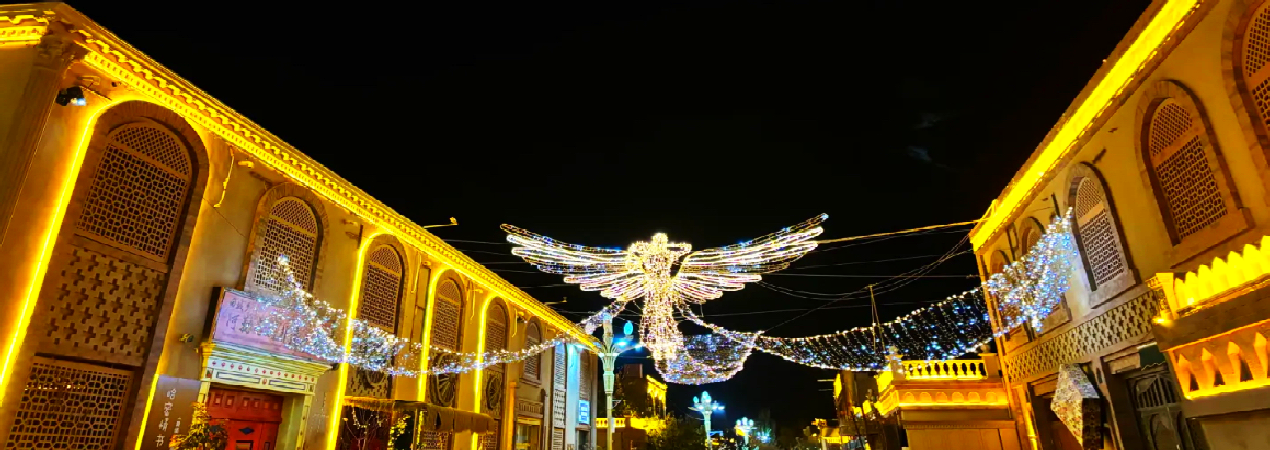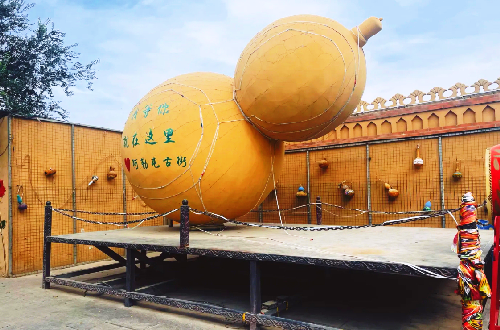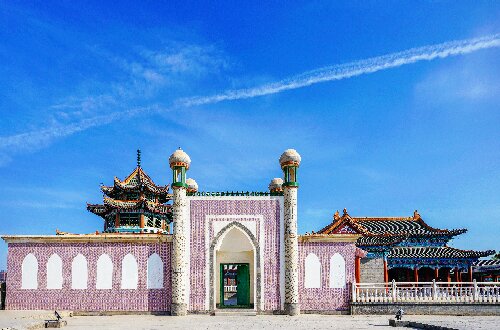Altun Ancient Street

Hami Altun Ancient Street is a well-preserved Qing Dynasty street in Yizhou District, Hami City, Xinjiang. First built during the Qianlong reign, it has a history of nearly 300 years. Stretching about 800 meters, it is one of the best-preserved and most distinctive historical and cultural blocks in downtown Hami. The strong charm of intangible cultural heritage in Altun Ancient Street attracts tourists from all over, making it the first choice for visitors to check in when traveling to Hami.
- Chinese name: 阿勒屯古街 Ā Lè Tún Gǔ Jiē
- Suggested time: 1 - 2 hours
- Ticket: Free
- Open hours: Open 24 hours. However, the operating hours of some shops and attractions may vary.
- The best time to visit: All year round
- Address: Altun Community, Tianshan District, Hami City, Xinjiang Uygur Autonomous Region, China
- How to get there: Take Bus No. 10 and get off at the Museum Station, then walk about 250 meters to reach the destination.
- Surroundings: Hami Museum
Highlights of Altun Ancient Street
Intangible Cultural Heritage Workshop
In the Intangible Cultural Heritage Workshop, there are a variety of handicrafts such as Uyghur flower hats and Aidilaisi silk, each of which embodies the hard work and wisdom of the craftsmen. It showcases various intangible cultural heritage projects, and brings together national, autonomous region, and Hami city-level intangible cultural heritage inheritors of embroidery, Muqam, paper-cutting, gourd painting, etc. to set up personal studios, providing them with a display platform to promote the inheritance and development of various intangible cultural heritages.
Muqam Study Hall
The Muqam Study Hall centrally displays various ethnic musical instruments such as the Aijieke, Dombra, Rawap and hand drum. Tourists can not only observe the craftsmanship of instrument making but also participate in impromptu performances.
Gourd Painting
 Gourd Sculpture of Altun Ancient Street
Gourd Sculpture of Altun Ancient StreetAltun Ancient Street has a long history of gourd cultivation. Villagers dry and hollow out gourds, paint on their outer skins, and use techniques such as relief carving, hollowing out, and electric branding to transform them into exquisite handicrafts through painting and carving. Entering the Gourd Peasant Painting Study Hall in the ancient street, the display shelves are filled with gourd crafts.
Id Kah Grand Mosque
This is the largest indoor mosque in Xinjiang. It extends 60 meters from east to west and 36 meters from north to south, covering an area of 2,300 square meters and capable of accommodating 4,000 people for worship simultaneously. The mosque features 9 rows of 108 carved wooden pillars supporting the roof, each made from unprocessed Tianshan pine. The four walls are painted with vibrant floral patterns and Arabic inscriptions of the Quran, the ceiling of the main hall is adorned with grid-shaped caisson motifs, and the floor is paved with square blue bricks.
Hami Hui Royal Palace
 Hami Hui Royal Palace
Hami Hui Royal PalaceThe Hami Hui Royal Palace is located close to Altun Ancient Street—visitors can walk to Altun Ancient Street from the palace in five minutes, though it is not situated within the ancient street itself. The Hami Hui Royal Palace was once a large-scale, magnificent palace complex with unique architectural styles in Xinjiang, renowned as the "Little Forbidden City of the Western Regions." The current Hui Royal Palace scenic area is a reconstructed complex of ancient-style buildings. Here, visitors can experience the grandeur and exquisite craftsmanship of the original Hami Hui Royal Palace and gain insights into the history of Hami during the era of the Hui Kings.
Educational Value
The Uyghur earth buildings preserved in the ancient street are typical examples of architectural science in arid areas. The walls are made of a mixture of loess and wheat straw, which has good thermal insulation performance and can adapt to the climate characteristics of Hami, with large temperature differences between day and night, showing the scientific application of the physical properties of building materials by the ancient residents of the Western Regions.
Activities to do at Altun Ancient Street
Enjoy intangible cultural heritage songs and dances: On the second-floor terrace in the middle of the ancient street, there are intangible cultural heritage performances such as the Twelve Muqams and hand drum shows. Visitors can enjoy these wonderful acts and experience local cultural characteristics.
Participate in intangible cultural heritage activities: Altun Ancient Street has activities such as gourd painting workshops, Twelve Muqam workshops, and hand-weaving workshops. Visitors can learn intangible cultural heritage skills by joining these activities.
Taste special cuisine: The ancient street boasts a variety of local delicacies, including grilled lamb skewers, hand-pulled pilaf, and baked naan. Tourists can savor these regional dishes and immerse themselves in Xinjiang's food culture.
Drop us a line and we'll connect you with the top China expert in no time!